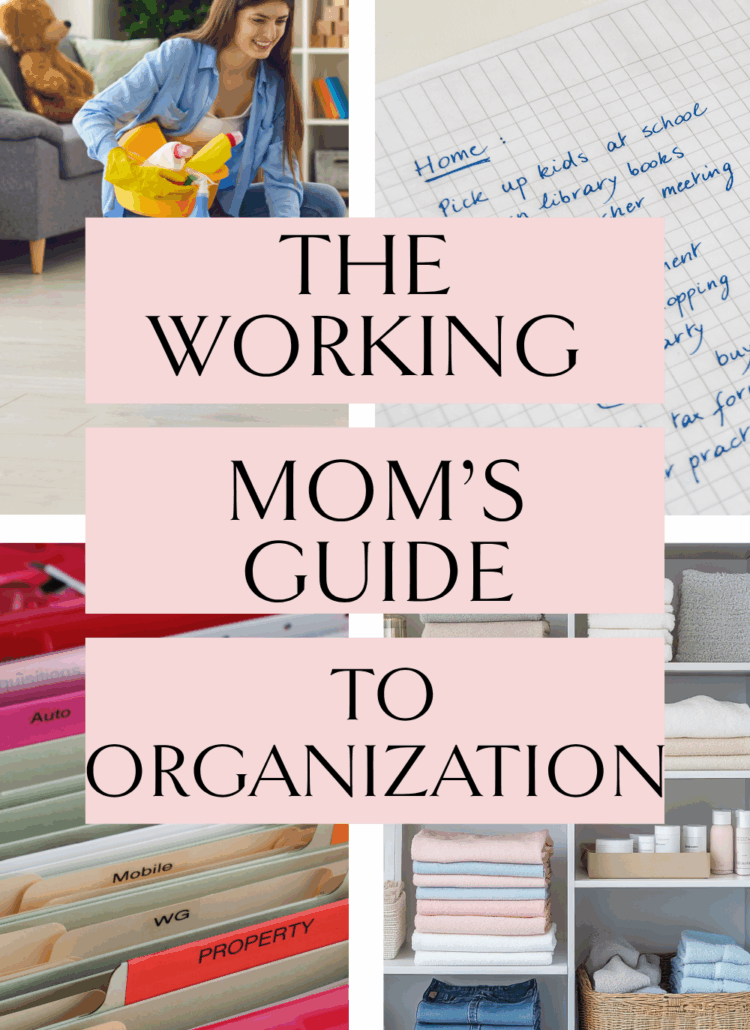The New Year naturally brings a desire to start fresh. What better way to embrace this season of renewal than by focusing on home organization and adopting a minimalist lifestyle?
As a mom of three young kids—a 6-year-old, a 2.5-year-old, and a 10-month-old—I understand how chaotic home life can get. Balancing work, life, and parenting can make organization challenging.
Staying organized while balancing work, family, and everything else is no small feat. Yet, I have learned that even small, intentional changes can lead to a more peaceful clutter-free home. Some practical changes can make a huge difference.
Whether you’re aiming for a full transformation or just want to improve a few spaces this list of 15 organizational ideas that are both attainable and impactful.
These tips aren’t about striving for perfection but rather about making small, meaningful improvements over time. They are simple, realistic, and impactful. Let’s explore how to make your home feel lighter, calmer, and more manageable.
1. Declutter One Small Area at a Time
When starting the decluttering journey, it’s essential to avoid feeling overwhelmed. Start small. Starting small is the best way to avoid overwhelm. Choose one single area to tackle first. It could be a kitchen cabinet, or even a single shelf in the laundry room. Focusing on one small space makes the task feel more doable. When you finish that space, move on to another. Over time, these small wins will add up and help build your momentum. It also helps you to stay motivated in your decluttering process when you can see progress.
Pro Tip: Keep a trash bag handy for items to throw away and a donation center box for things that are still useful. Also, involve your kids. Teach them the value of donating unused toys to children who need them. (It is also a great way to introduce the principles of minimalism to them at an early age.)

2. Adopt the “One In, One Out” Rule
This is a simple rule that keeps clutter from creeping back into your home. Every time a new item comes in, let go of an old one. For example, when your child gets a new toy for their birthday or Christmas, donate one they are no longer using or have outgrown. If you replace a kitchen gadget, get rid of the one you no longer use.
This rule is especially helpful during the holidays or birthdays when so many gifts are arriving. When utilizing the one in, one out rule on a regular basis, it keeps the amount of stuff in your home under control.

3. Create a Rotating Toy Library
If you feel like your kids’ toys have completely overtaken your living room, (SAME!!!), it might be time to try setting up a toy rotation system. I would suggest using storage boxes to separate toys into categories, and only keep a few sets out at a time.
Rotating them weekly or monthly keeps the toys feeling fresh for your kids and reduces clutter. This system not only simplifies tidying up but also keeps the living space more manageable by creating a clutter-free zone.
4. Designate a “Clutter-Free Zone”
One effective way to maintain a sense of order is to establish a clutter-free zone in your home.
For example, choose a specific surface, such as the dining table or a kitchen countertop, and commit to keeping it clear. Consequently, this area becomes an oasis of calm amidst the daily chaos.

5. Organize Kids’ Artworks Creatively
My kids love creating, but their endless kids’ artworks can pile up fast. Instead of saving every piece, consider creating a digital archive by photographing their creations. Additionally, you can rotate their artwork on a gallery wall or use smaller boxes to store particularly sentimental pieces. I use these kid art frames from Amazon to display my children’s art work.

6. Simplify the Laundry Room
The laundry room often becomes a catch-all for clutter, but a little organization goes a long way. Start by categorizing detergents and supplies into labeled bins or baskets. If you’re short on storage space, consider installing wall hooks or shelves. Ultimately, an organized laundry area saves you time in the long run.

7. Use Drawer Dividers for Small Items
Drawer chaos can make everyday tasks more stressful. Whether it’s a desk drawer, kitchen drawer, or bathroom drawer, drawer dividers help create order. They’re an easy way to keep small items like utensils, hair ties, and office supplies in their right place.

8. Establish a Family Drop Zone
Shoes, jackets, and backpacks often get scattered throughout the house, especially with young kids. By creating a family drop zone near the entrance—with hooks, cubbies, or bins—you can keep these essentials organized. Assigning a specific spot for each family member ensures everyone knows where to store their items.
9. Minimize Sentimental Items Thoughtfully
Sentimental items can be some of the hardest to part with. Instead of keeping everything, focus on preserving items that truly spark joy or hold significant meaning. For things you can’t part with, consider creating a memory box for each child to keep these treasures in one organized place.
10. Maximize Open Spaces
Creating open spaces doesn’t mean removing all your belongings. Instead, it’s about keeping only the essentials and reducing clutter. For example, fewer decorative items and multifunctional furniture can make your rooms feel more open and inviting. Over time, this shift toward a more minimalist home can have a positive impact on your peace of mind.

11. Label Everything
Using a label maker is one of the most effective ways to create an organized home. Labeling bins, toy boxes, and pantry containers not only keeps items in their right place but also makes it easier for your kids to tidy up independently. As a result, maintaining order becomes much simpler for everyone.

12. Declutter Toys with the Kids
Decluttering toys doesn’t have to be a solo mission. While toddlers may not fully grasp the concept, older kids can participate. For instance, ask your 6-year-old to choose a few toys they no longer play with. Then, talk about the positive impact of donating these items to other children in need.

13. Reassess Your Organizational Systems
Every household is unique, so your organizational systems should reflect what works best for your family. Regularly evaluate your systems to see if they’re still serving you. For example, if your toy bins aren’t effective, perhaps smaller boxes or stackable containers would work better.
14. Tackle the Kitchen for Easier Cleaning
The kitchen is often the heart of the home, but it can quickly become a clutter magnet. Start by reducing duplicates—such as extra utensils or appliances you rarely use. Then, clear flat surfaces like countertops, leaving only the essentials. This creates a clutter-free zone that makes cooking and cleaning more enjoyable.
15. Inspire Yourself with Experts
Sometimes, learning from others can help you find your way. Turn to experts like Marie Kondo or Joshua Becker, who focus on simplifying through the KonMari Method and the principles of minimalism. By following their guidance, you can adopt strategies that lead to lasting change.

Why Home Organization Matters
At its core, home organization isn’t just about aesthetics. It’s about creating a functional, peaceful environment where you and your family can thrive. With fewer things to manage, you’ll find yourself spending less time cleaning and more time enjoying meaningful moments with your loved ones.
By implementing even a few of these ideas, you can take the next step toward a more clutter-free home. For me, changes like organizing one drawer or setting up a toy rotation have already made a huge difference. I hope these ideas inspire you to embrace a fresh start this New Year. Let’s tackle this together!




[…] Fresh Start to Your New Year Organization […]